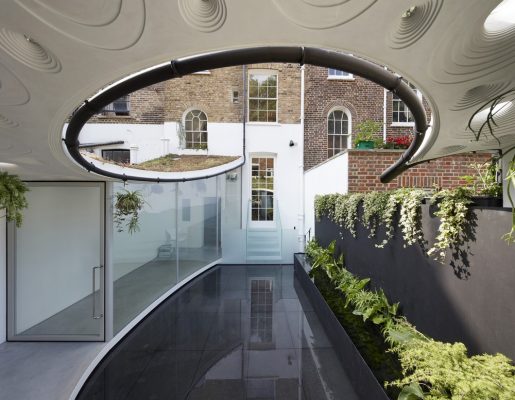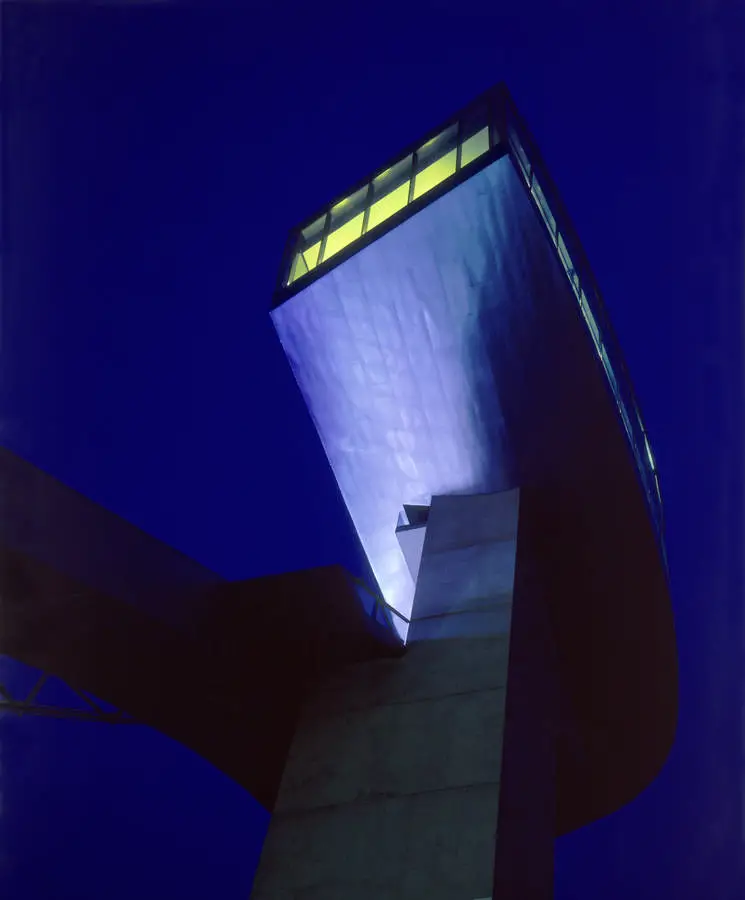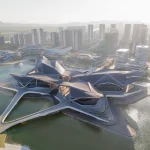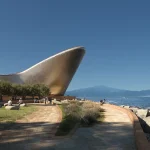Iconic Projects of Queen of The Curve, Zaha Hadid Building Design, Global Architecture
Iconic Projects of Queen of The Curve, Zaha Hadid
Architectural Design Article
14 Jan 2019
Iconic Zaha Hadid Designs
The Most Iconic Projects of Queen of The Curve, Zaha Hadid
Zaha Hadid, born in 1950 in Iraq, was considered stubborn, spirited, brilliant and a bit eccentric. She described her work as a ‘flowing kind of spatiality,’ and indeed, many of her creations remain truly unmistakable, earning her the title of ‘Queen of the Curve.’ “People say I design architectural icons. If I design a building and it becomes an icon, that’s ok,” Zaha Hadid once said.
However, prodigious celebrity came relatively late for Zaha Hadid. It was not until her 60th birthday that the native Iraqi woman had climbed to the pinnacle of the world of architecture stars, earning her a place alongside Norman Foster and Daniel Libeskind. And in 2004, she was the first woman to receive the most prestigious award in architecture, the Pritzker Architecture Prize.
‘Architecture is particularly difficult for women; there’s no reason for it to be. I don’t want to blame men or society, but I think it was for a long time, the clients were men, the building industry is all male,” said Zaha Hadid, proving that a woman could also flourish in a male-dominated industry.
However, the well-respected and talented architect only got to enjoy five years of her resounding success. On March 31, 2016, she unexpectedly died in a Miami hospital after being previously treated for bronchitis; reported by deadorkicking.com. Zaha Hadid left the bulk of her wealth that was in her international design business in trust, as she had no children. The remainder of her estimated £65 million fortune was bequeathed in amounts to her business partner and remaining family members. Her passing came as a shock to many because it was so sudden.
For a long time, Hadid’s plans were considered unrealizable
Her adopted country or residence was Great Britain and according to Hadid the only country in which one could be artistically successful and at the same time eccentric.
She was born and raised in Baghdad, where her father was a wealthy businessman and co-founder of the Progressive Democratic Party after the fall of the monarchy. The family led a Western lifestyle. After the seizure of power by Saddam Hussein and the outbreak of the Iran-Irak War, the family left Iraq for Jordan.
Zaha first began studying mathematics in Beirut and then moved to the prestigious Architectural Association School of Architecture in London, where she studied, among others, under the tutelage of Rem Koolhaas who said of Hadid that she ‘was a planet in her own orbit.’
After graduating in 1977, she worked for Koolhaas and his partner, Zenghelis, for two years at their Office for Metropolitan Architecture in Rotterdam. Then, she opened her architectural firm, Zaha Hadid Architects, in London in 1979.
In the 1980s Hadid developed her distinctive style, which is associated with the school of so-called deconstructivism, consisting of free-flowing forms and visual complexity that are above purely functional design. This manner of architectural thinking was one of the reasons why Zaha Hadid was considered a theoretician rather than a master builder for such a long time. Her many detractors believed that her plans were merely that and not buildable.
As a result, Hadid devoted more and more of her time to teaching architecture. It was at Harvard Graduate School of Design, Cambridge University, the University of Chicago, the Hochschule für Bildende Künste in Hamburg, the University of Illinois at Chicago, and Columbia University where her colorful designs were presented but remained mostly un-built.
She first drew attention to herself in 1983 when she unveiled her design for a recreational park in the Peak district in Hong Kong, where no single right angle could be found – the ambitious project remained unrealized. Another frustrating moment on a similar note came eleven years later in 1994 when a competition jury chose her design as the best for the new Cardiff Opera House. However, the Welsh government refused to pay for it and again her design remained but a plan.
Hadid’s real international breakthrough came in 1993 with the Vitra fire station in Weil am Rhein. This initial success was followed by numerous built and non-built designs for prestige structures around the world. In 2005, she received the German Architecture Prize for the central building of the BMW plant in Leipzig, having been awarded the internationally important Pritzker Architecture Prize a year earlier. The imposing construction of the Phaeno Science Center in Wolfsburg is also spectacular. It towers like an avant-garde concrete sculpture seven meters above the street.
Major Zaha Hadid Building Designs
A slew of other projects followed
London Aquatics Center
For the 2012 Summer Olympics and the Summer Paralympics in 2012, the London Aquatics Center, a large-scale water sports arena in Stratford, London, opened on June 27, 2011. At the time of the games, it had 17,500 seats and after the dismantling over 2,800 seats in 2014.
The attribute that really catches the eye is the organically curved roof, which is reminiscent of an oversized alien flying saucer. Inside, the forms are harmonious, and as always generously designed, but subordinate to the purpose of the construction. The towers for jumping into the water were designed to create something exquisite and fascinating to the beholder.
Zaha Hadid teamed up with Reinhold Messner in Tirol
When you mix a star architect and an extreme mountaineer, you can be certain that the result of their teamwork is an object full of superlatives. On July 23, 2015, Reinhold Messner inaugurated the Messner Mountain Museum Corones on the Bruneck Plan de Corones on the edge of the Dolomites – truly innovative architecture against a spectacular backdrop.
Contrary to expectations, the cooperation between the eccentric architect and the headstrong mountaineer went well. The construction site was at an altitude of more than 2,000 meters.
Zaha Hadid was able to put her mark on the mountain and at the same time respect the character of the surrounding area. The building is an organically curved, futuristic-looking ‘Alpine UFO,’ clearly bearing the signature of the architect, but, at the same time, meticulously fitting into the landscape.
The structure captivates the visitor from the outside as well as the inside. The rooms are intertwined, no wall is straight, and there are no corners, just escaping rooms leading to a glass frontage behind which the magnificent vista over the Dolomites can be seen.
MAXXI – National Museum of Arts of the 21st Century, Rome, Italy
The museum opened in 2010 and consists of two complexes: MAXXI Art and MAXXI Architecture. The structure is considered a cultural innovation. Created on a former military site, the complex encompasses an area of 27,000 square meters and harmoniously blends into the architecture of the district.
The floor plan is based on the L-shaped plot. The futuristic design combines the concrete walls that define its network congenially with the movement and dynamics of the intersections, ramps, and stairs.
The Hungerburgbahn in Innsbruck
The stations of the Hungerburgbahn have set new, international standards for modern architecture. Different architects designed the stations Congress, Löwenhaus, and Alpenzoo, but the Hungerburg is Zaha Hadid’s baby.
The Hungerburgbahn is a funicular running from Innsbruck to the Alps; the entire trip takes about 20 minutes. In 2007, the newly designed Hungerburg was inaugurated.
Inspired by the snow and hoary landscapes, Zaha Hadid managed to create a contrast between the curved, light forms of the canopy and the earth-bound, firmly anchored concrete pedestals. That’s precisely what makes the building so unique.
The Bergisel Ski Jump
The Bergiselschanze is Austria’s most architecturally significant sports building. The ski jumping hill on the mountain of Isel in Innsbruck was inaugurated on September 4, 2002, and finally completed in 2003.
With its innovative, futuristic architecture, it is a symbol of the city, which, depending on the viewing angle, always shows itself to the beholder. Zaha Hadid received the Austrian State Prize for Architecture for this project in 2002. The Hungerburgbahn, at the other end of the city, forms an interesting counterpart to the Bergisel Ski Jump.
Napoli Afragola high-speed railway station
Posthumously, after Zaha Hadid’s sudden death in 2016 on June 6, 2017, Italian Prime Minister Paolo Gentiloni inaugurated the train station in Afragola near Naples. The 400 meter long futuristic-snake-shaped mega train station has been under construction since 2003, coming under much criticism, primarily because of its lack of access to Naples and the delays due to funding. A second construction phase will follow, which is expected to be completed in 2022.
Despite the suddenness of the death of this truly creative and inspirational woman, Zaha Hadid’s masterpieces will live on. Her designs have been transformed into reality all over the globe from Glasgow, Abu-Dhabi to Cincinnati in Ohio. She never backed down from a challenge and fierce criticism – that goes to show you how far hard work and self-belief can take you.
Location: UK – international
ZHA Architecture Designs
ZHA Articles
Zaha Hadid Architecture Designs
Building Designs
Sun Rain Rooms, Islington, North London
Design: Tonkin Liu Architects

photo : Edmund Sumner
Sun Rain Rooms Home Extension
Comments / photos for the The Most Iconic Projects of Queen of The Curve, Zaha Hadid page welcome
Website: UK





